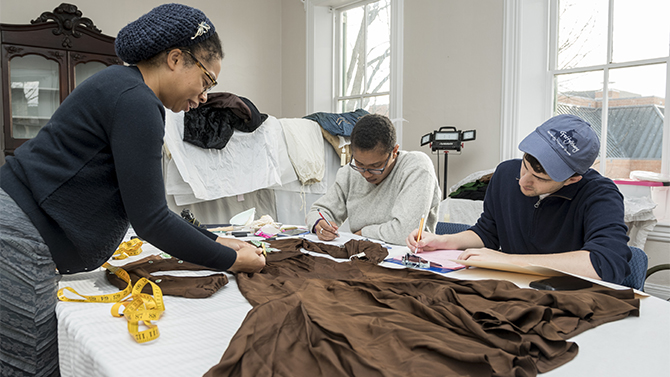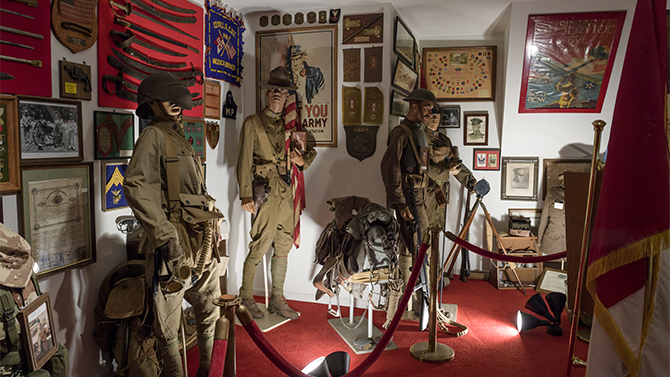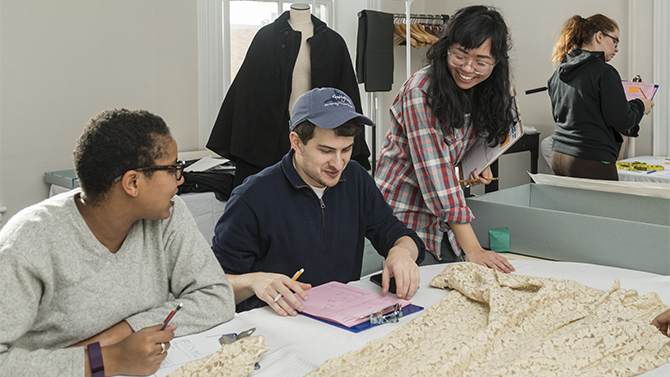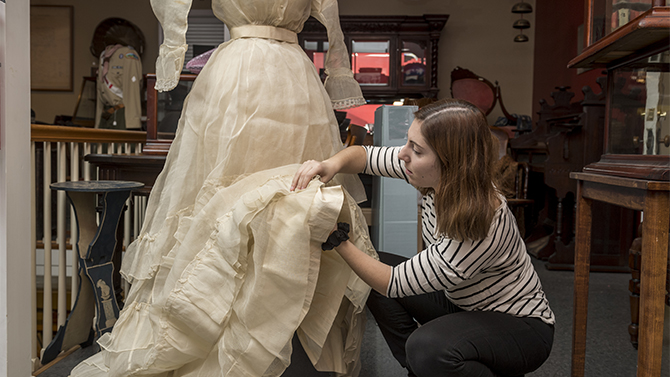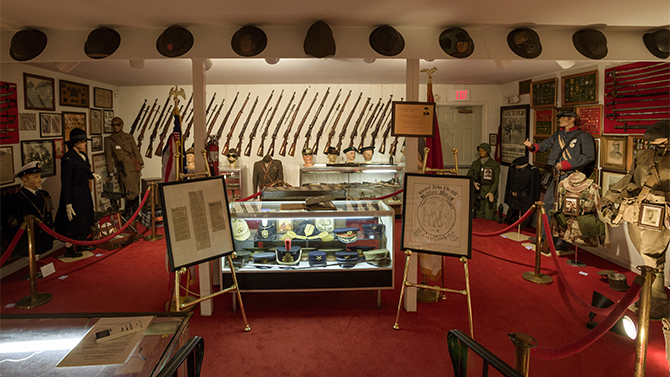

The fabric of history
Photos by Kathy F. Atkinson and Evan Krape January 30, 2017
Museum Studies team works with Cecil Historical Society collection
From a nine-piece Quaker wedding gown made in the 1860s to a U.S. Army uniform worn in the Korean War, the Cecil County (Maryland) Historical Society’s clothing collection provided plenty of material for University of Delaware students to put their knowledge of museum practices to work.
About a dozen graduate students in UD’s Museum Studies program spent two weeks this month at the all-volunteer society in Elkton, Maryland. Calling themselves a SWAT team, the students offered assistance with researching, cataloging and storing some of the museum’s extensive collection of clothing and textiles.
The program, now in its seventh year, has two purposes. It helps small museums, which often lack staff and resources, manage their collections by donating hundreds of hours of work, and it gives the students intensive, hands-on experience putting their skills into practice.
Students, who work under the supervision of Katherine Grier, director of the Museum Studies program and professor of history, and program coordinator Tracy Jentzsch, also receive credit toward a certificate in museum studies and get the opportunity to network with professionals and build relationships for future job placements.
“We’re all volunteers here, so having the students come in is a huge help to us,” said Lisa Dolor, one of the historical society’s curators. “When we heard that we had been selected [as the 2017 SWAT team site], we decided that we’d ask them to work on textiles. That’s a big part of our collection, and we don’t have volunteers with expertise in that area.”
Paula Newton, the historical society’s president and a retired UD employee, said having help with inventorying, identifying and properly storing clothing will benefit the museum in many ways.
“When we put together an exhibit, we like to include clothing from the period,” she said. “People enjoy seeing it, and it helps to tell the story — to bring history to life — but it’s been difficult to know exactly what we have.”
So much clothing had been donated over the years that the museum has filled numerous double closets with stacks of 18-by-40-inch storage boxes containing clothing and accessories.
“At one time, we were known as Cecil County’s attic,” Dolor said.
The museum had already made a good start by organizing and labeling the clothing collection, Jentzsch said, allowing the students to work productively and gain a great deal of experience.
Cara Tortorice, a graduate student in fashion and apparel studies, helped her teammates — most of them pursuing master’s degrees in history — with specialized knowledge about such topics as fabrics and styles. But she said she also learned a lot from the SWAT team experience.
“I’ve worked with the [UD] Historic Costume and Textiles Collection for years, but this collection is different because a lot of the research hasn’t been done before,” she said. “This project is letting me use lots of skills I didn’t use before.”
For Sam Christensen, a history graduate student and Hagley Scholar whose interest is in aviation history, the SWAT project was very different from work he previously did at the Air Mobility Command Museum at Dover (Delaware) Air Force Base, where he focused on the aircraft themselves. But his knowledge of the military was put to good use in Cecil County, where many veterans and their families had donated old uniforms.
“This project is great because it’s so hands-on,” Christensen said. “It really gives you an opportunity to apply what you’ve learned.”
In addition to examining and cataloging items in the collection, the team entered the information into a collection management database known as Past Perfect.
“This means that researchers will have the information they need about what items they have and will know where to find them,” said history graduate student Sharon Hess as she worked at a computer. “This might be the least fun part of the job, but it’s the most important part of working to keep historic artifacts safe for future generations.”
The SWAT team service project began in January 2011. From then until 2015, it was funded by an Institute for Museum and Library Services’ Sustaining Places grant.
Contact Us
Have a UDaily story idea?
Contact us at ocm@udel.edu
Members of the press
Contact us at 302-831-NEWS or visit the Media Relations website

